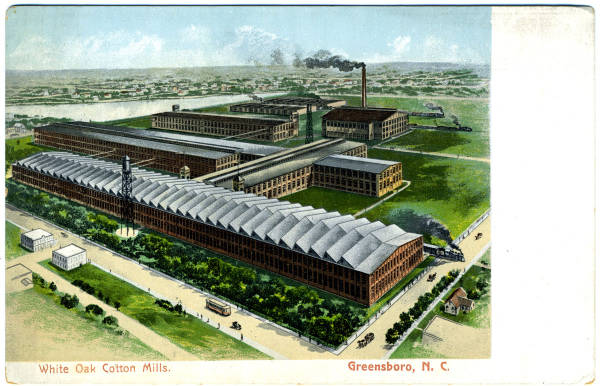Claribel Cone and Etta Cone in Michael and Sarah Stein's rue de la Tour apartment, Paris, c. 1922-1926. The Baltimore Museum of Art: Dr. Claribel and Miss Etta Cone Papers, Archives and Manuscripts Collection, SFH.43. All works by Henri Matisse seen in archival photograph © 2011. Succession H. Matisse / Artists Rights Society (ARS), New York. Henri Matisse Archive.

This exhibition includes several photographs that depict the Cone sisters’ lives between 1903 and the 1940s. The photograph above is a studio portrait, circa 1900s, of an unknown woman in front of a painted beach scene from the Library of Congress.
We would like a glimpse of your family’s life during those years. Share your family photographs from between 1903 and 1949. Please send photographs via email to wendy.hower@duke.edu. We will display a number of these online. By submitting a photo you agree to allow the Nasher Museum of Art at Duke University to use this image on the museum's website and in the galleries.
Claribel and Etta Cone could not have built one of the world’s foremost modern art collections without the state of North Carolina.
During their travels to the South on behalf of their father’s grocery business, brothers Moses and Ceasar Cone connected with the owners of mill stores. They began investing in textile mills, and their father sold his business to help them start up the Cone Export and Commission Co. in New York in 1890. The brothers approached Southern mills, asking them to sell their total output exclusively to Cone Export and Commission; 38 out of 44 mills agreed. Two years later, the brothers opened Southern Finishing and Warehouse Company in Greensboro (one of the first textile finishing factories in the South), acquired the Asheville Cotton Mill, and moved the headquarters of Cone Export and Commission to Greensboro.

For a short while, the textile mill owned by the Duke family in Durham produced denim for the Cones. By 1895, the Cones had built the Proximity Manufacturing Co., a plant for spinning and weaving denim. In 1898, the brothers began producing flannel at Revolution Mill. White Oak Cotton Mills in Greensboro, the largest mill the Cones owned, was built between 1902 and 1905; by 1908 it was the largest producer of denim in the world. The Cone mills were the major supplier of denim for Levi Strauss for nearly a century. In addition, the Cone brothers invested in Salisbury Cotton Mills in Salisbury and Minneola Manufacturing Company in Gibsonville, and acquired Cliffside Cotton Mills in Cliffside (for production of terry cloth), the Haynes Plant in Avondale (for production of chambray), the Holt-Granite Puritan Mills Company in Haw River, the Tabardrey Manufacturing Co. (for production of corduroy), Florence Mills in Forest City, and controlling stock of Eno Cotton Mills in Hillsborough.
Etta Cone often visited Blowing Rock, where her brother and his wife Bertha built the 23-room Flat Top Manor on their 3,600-acre estate. He planted 10,000 apple trees (25 different varieties) and won prizes for his apples.
The wealth generated from the brothers’ innovations and entrepreneurship in textile manufacturing provided an income allowing the two Cone sisters to amass a collection of approximately 3,000 paintings, sculptures, drawings, prints and other objects, including more than 500 works by Henri Matisse.
Sources: Ellen B. Hirschland and Nancy Hirschland Ramage, The Cone Sisters of Baltimore: Collecting at Full Tilt (2008, Northwestern University Press, $34.95), Karen Levitov, Collecting Matisse and Modern Masters: The Cone Sisters of Baltimore (2011, Yale University Press), Jack Flam, Matisse in the Cone Collection: The Poetics of Vision (2001 Pennsylvania State University Press) and the Cone Mills Corporation Records at the University of North Carolina (https://www.lib.unc.edu/mss/inv/c/Cone_Mills_Corporation.html)